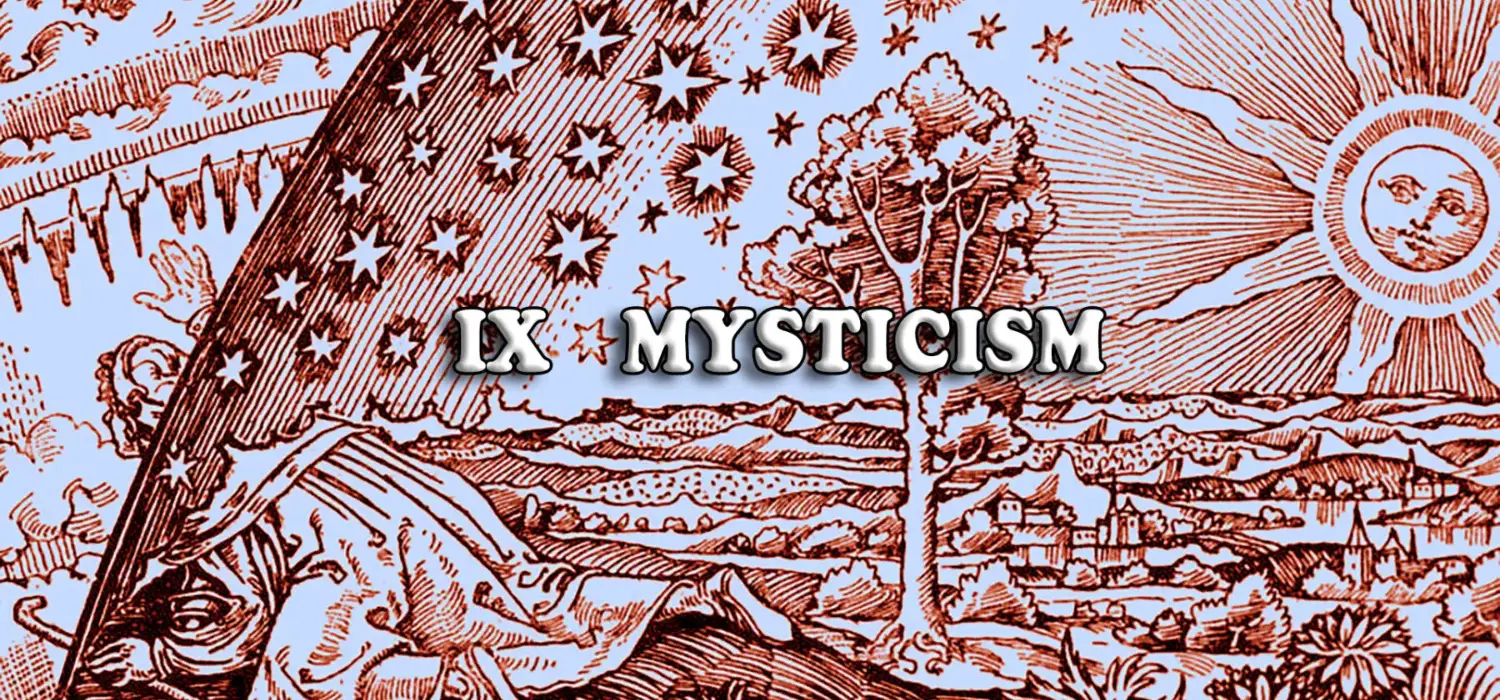
Mysticism, Analogy, and Metaphor IX 4
Sacred Speech Masterclass episode IX
part 4 of 5 parts
hosted by Baba Rampuri
![]()
Mysticism, Analogy, & Metaphor
… which doesn’t conform to the European usage of mysticism but more the use of hermeticism, alchemy and so forth of the Middle Ages ..
![]()

![]()
“What’s the difference between Sacred Speech and ordinary speech, normal speech?”
To begin to answer that question because this requires quite a large answer, but to begin to answer this, I can refer right back to what we just said, “how I see Bharat, in traditional Bharatiya culture, is basically devoid of how the Europeans have used the word mysticism, and it gets down to the speech itself. That when we take Panini, for example, we take his text, Ashtadhyayi, there is not a super imposition of a philosophy, of a rational kind of thinking, of solely a rational thinking, and, by the way, Panini’s text was not meant really for people who did not know Sanskrit, in fact his text was never really meant for mere students of Sanskrit, to understand Panini’s text one had to have a considerable knowledge of Sanskrit. And the reason for Panini’s text, and this is something I asked myself for years as I struggled with this text, this is, My God, this is really a struggle to where – to see how this works and where the whole thing goes. Why would he make something of such enormous complexity, such complexity that even in the West it has taken academics, and mathematicians and linguists until the last 50 or 60 years to really figure out where Panini is going with all of this stuff. Why would he do this? Was he trying to impress his peers? Why would he make such a seemingly intense theoretical exercise to define a whole language, or to define Speech itself. And the reason that I finally concluded was that there was something much bigger here. That there was the performances of sacred rites for the very prosperity of society, and the sacred rites required enormous precision, as in all magic ritual. So, Panini and whole traditions and lineages of people like him, who were thought of as grammarians, or meta-grammarians, disciplined the performance of the vedic ritual. This is why it is so important for the societies of that time, for the kings and queens of that time, in order to keep their publics happy.
Kailash also mentioned in one of his comments, I think in a complimentary sense, that he didn’t see any of this weird magic in what Babaji is talking about it, in terms of syllables, he’s not making any promises that anybody is going to have a better harvest or get rich quick or anything like that by using these certain syllables, in fact he said, that, in a way, Babaji sort of seems scientific in his approach. So, we make a distinction, we must make a distinction, now, between the mystical and the scientific, because there is a distinction here, and the distinction is not one of one being highly rational and the other being irrational. It’s not that one is something that is transparent and provable and the other is something that is unknowable and often flaky. And so I thought we would examine some of these elements, and these are very esoteric elements involved in what I consider mystical kind of thinking as opposed to scientific thinking – not conforming to the usage of mysticism as we have just described in European history, but I am going in the direction of Sacred Speech. Sacred Speech is to us, at this point, of course, is just an idea, an ideal, in fact, I would go so far as to say it is a fiction. We want to give some substance to it. We want to give some density to it, so we can start understanding at least its contours if not something even deeper about it. So, I’ve made a, I discovered, I found an old outline that I had made, about resemblance. Resemblance is a category that is used extensively in Indian culture and was a category used in European sort of “mystical culture” which doesn’t conform to the European usage of mysticism but the more use of hermeticism, alchemy and so forth of the Middle Ages, and curiously enough, it’s in the vocabulary of hermeticism, European hermeticism, that I find more similarities with Indian usage of some of these concepts than I find in the modern psychoanalytical terms which are in common usage today. In fact I really object to most of these modern psychoanalytical terms; I don’t think they really describe or represent Bharatiya tradition at all. So, I have a couple, short things to read to you, from the Vedas that are going to set the stage for this discussion. And then I am going to read to you a passage from my book, Autobiography of a Sadhu. Ok. So. Can you see this? This is my old copy of the Purushashukta, which is a very important Vedic Rig. Now this is the Rig 14 in Purushashukta, and the translation is:
From the mind of Virat Purusha was born the moon.
From His eyes, the sun.
From His mouth, Indra and Agni,
From His life breath, the wind
From the naval of the Virat Purusha, sprang the space between Heaven and Earth
From his head, the Heaven
From his feet, Earth
The Gods and Rishis created the other worlds in this manner.
There are literary devices there that are very important for us to understand, especially the analogy.
![]()